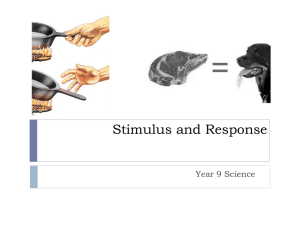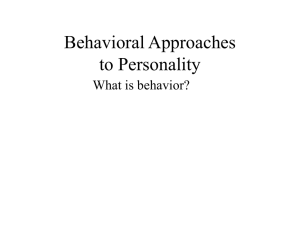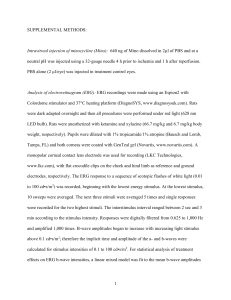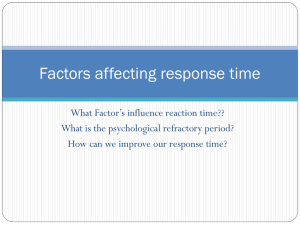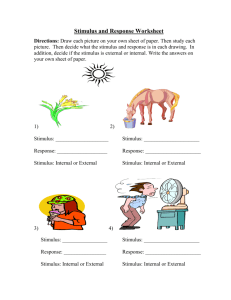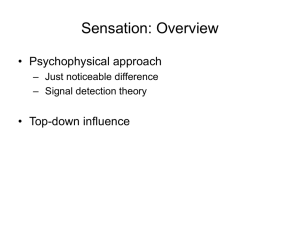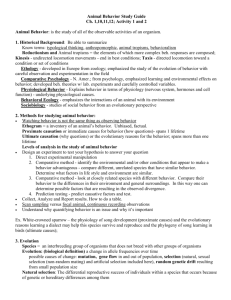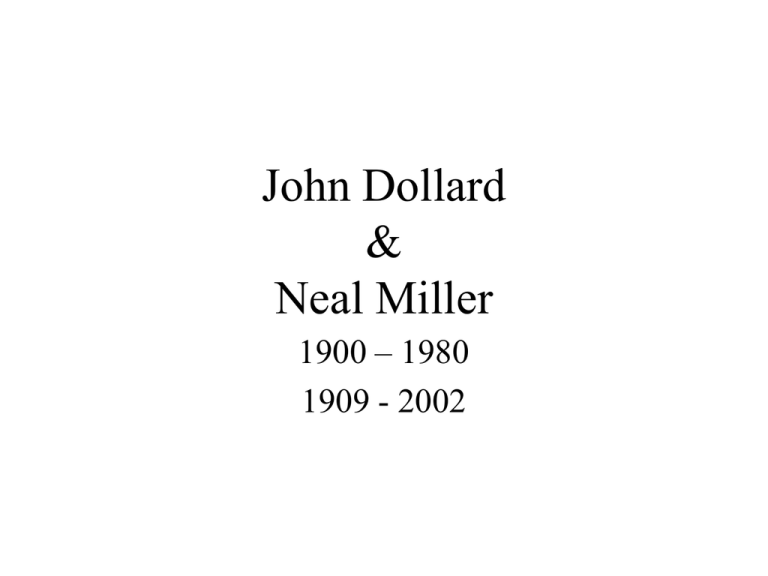
John Dollard
&
Neal Miller
1900 – 1980
1909 - 2002
Background
• Together:
– Believed the two best sources of information about the normal
human personality are the rat and neurotic humans who seek
professional help.
– Did a lot of work on frustration and aggression
– Sought to translate Freud’s theory into concepts of learning theory
and make his claims testable
– Their work is often seen as representing the transition from radical
behaviorism to cognitive psychology
Hull
• Drive reduction theory of learning
– Habit is the association between a stimulus and a response
• If a stimulus (S) leads to a response (R), which in turn
produces a reinforcer, the association between the stimulus and
response becomes stronger. (The habit of performing that
response in the presence of the stimulus becomes stronger)
– Referred to as S-R theory
Theory
• Four concepts of learning:
– Drive: Wanting something
• Stimulus that energizes behavior
– The stronger the stimulus, the stronger the drive
• Internal, external, primary, and secondary
– Primary drives at the building blocks of personality
– All acquired (secondary) drives ultimately depend on primary drives
Theory
• Four concepts of learning:
– Cues: Noticing Something
• Guides behavior
• Determine when we will respond, where we will respond, and
which response we will make
– End of shift whistle
– Restraunt sign
– Traffic light
Theory
• Four concepts of learning:
– Response: Doing Something
• Reduce or eliminate drive
• Elicited by the drives and cues present
Theory
• Four concepts of learning:
– Reward or Reinforcement: Getting Something
• Any stimulus that causes drive reduction
Hunger -> Restraunt sign -> Go into restraunt -> Eat
Drive
Cue
Response
Drive
reduction
Theory
• Four concepts of learning:
– Response hierarchy
• Initial hierarchy of response
– Highest probable response (dominant response) to least
probable
– If drives are satisfied with dominant response, no learning
occurs
» learning dilemma
– When new hierarchy is formed (resultant hierarchy of
response), learning occurs
4 Critical Training Periods of Children
• Feeding
– The conditions under which the hunger drive is satisfied will be
learned and generalized into personality attributes
• Child left hungry will stop crying and possibly become
apathetic, apprehensive, or fear being alone
• Child fed develops love for mother and a sociable personality
4 Critical Training Periods of
Children
• Cleanliness Training
– Parental response is critical
• Child may have difficulty
distinquishing between
disapproval of what
they have done with disapproval
of them personally
4 Critical Training Periods of Children
• Early Sex Training
– Punishment for masturbation (bed wetting or
intentional)
• May develop avoidance behaviors if
overemphasized
– Fear of authority figures
4 Critical Training Periods of Children
• Anger – Anxiety Conflicts
– Children must learn to deal with anger
• Can be healthy in that self control can be gained
• Can be unhealthy in that it can remove appropriate
assertive behavior.




